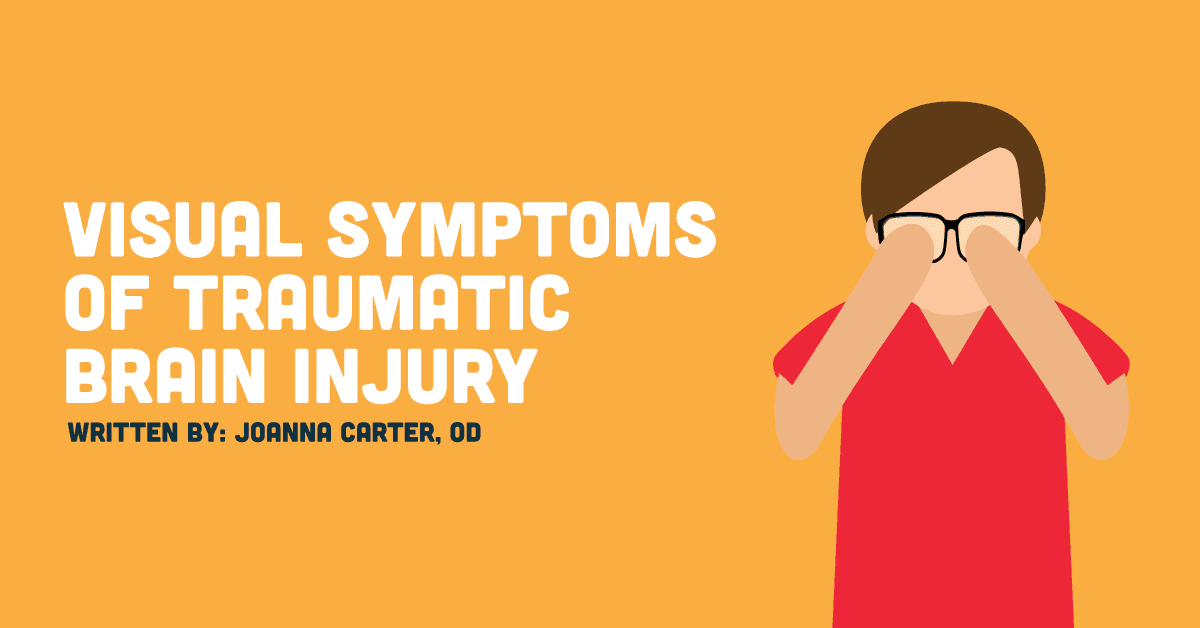Traumatic brain injury (TBI) is a serious concern for patients of all ages. Fortunately, most patients recover completely within the first few weeks of a mild head injury. However, 10-15% have lingering symptoms which can prevent them from returning to school and work.
What effects does traumatic brain injury have on the visual system?
Visual symptoms may include blurred or doubled vision, poor eye tracking, light sensitivity, dizziness or vertigo, balance problems and much more. An optometric evaluation can help to uncover deficiencies in the visual system which can have a profound effect on overall function.
- Focusing problems – A reduction in eye focusing ability results in blurry vision at near, even in young athletes. Near vision may be constantly blurry or may pulse in and out of clarity during near activities.
- Blurry vision – Blurry vision following a concussion can occur at distance, near or both.
- Convergence insufficiency – This inability to use the eyes comfortably at near can result in a number of symptoms including: headaches, eye strain, fatigue or even double vision during near activities.
- Double vision – Anyone who sees double (even intermittently) should be evaluated by an optometrist with advanced training in neuro-optometry, binocular vision and vision therapy.
- Light sensitivity – Photophobia, or light sensitivity, can result from various types of acquired brain injuries (including concussions).
- Ocular-motor dysfunction – Deficiencies in eye movement abilities are quite common following concussions and other forms of mild traumatic brain injuries. These eye movement deficits can pose challenges with many activities of daily life, including reading and driving. Oculomotor dysfunction can cause dizziness and vertigo symptoms as well, which can significantly impact a patient’s quality of life.
- Balance problems – After a head trauma, a patient’s awareness of their “center” can be shifted. This is called an egocentric localization shift. It can cause a patient to lean or fall forward, backward or to the side. Special lenses may be needed to improve the patient’s balance.
Reduced cognitive abilities with visual tasks
Visual information processing deficits can be caused by concussions and have dramatic effects on academic, occupational and even athletic success.
- Visual discrimination – Seeing small detailed differences between objects
- Visual memory – Keeping a visual image in your head in order to retain information better
- Visual sequential memory – Remembering a sequence of information, like a phone number, or several items on a to-do list
- Visual figure ground – Finding objects in a crowded area, working with spreadsheets on a computer. Crowded stores and restaurants can be overwhelming also.
Reduced visual processing speed or reaction time
Prolonged visual processing speed can slow down an athlete both on and off the field. The speed with which an athlete processes visual information affects many aspects of athletic competition, including:
- reading the field of play
- judging the speed of a moving ball or puck
- judging the speed of other players on the field
Visual information overload
Patients will often develop visual adaptations to help them cope with the visual information overload that they experience following a head trauma. For this reason, an optometric evaluation is recommended as soon as possible so that you can quickly initiate treatment, minimizing negative adaptations.
Due to the neuroplasticity of the brain, patients can still benefit from treatment even several years following a head injury.
For more information on optometric treatment options, stay tuned for my next article!
